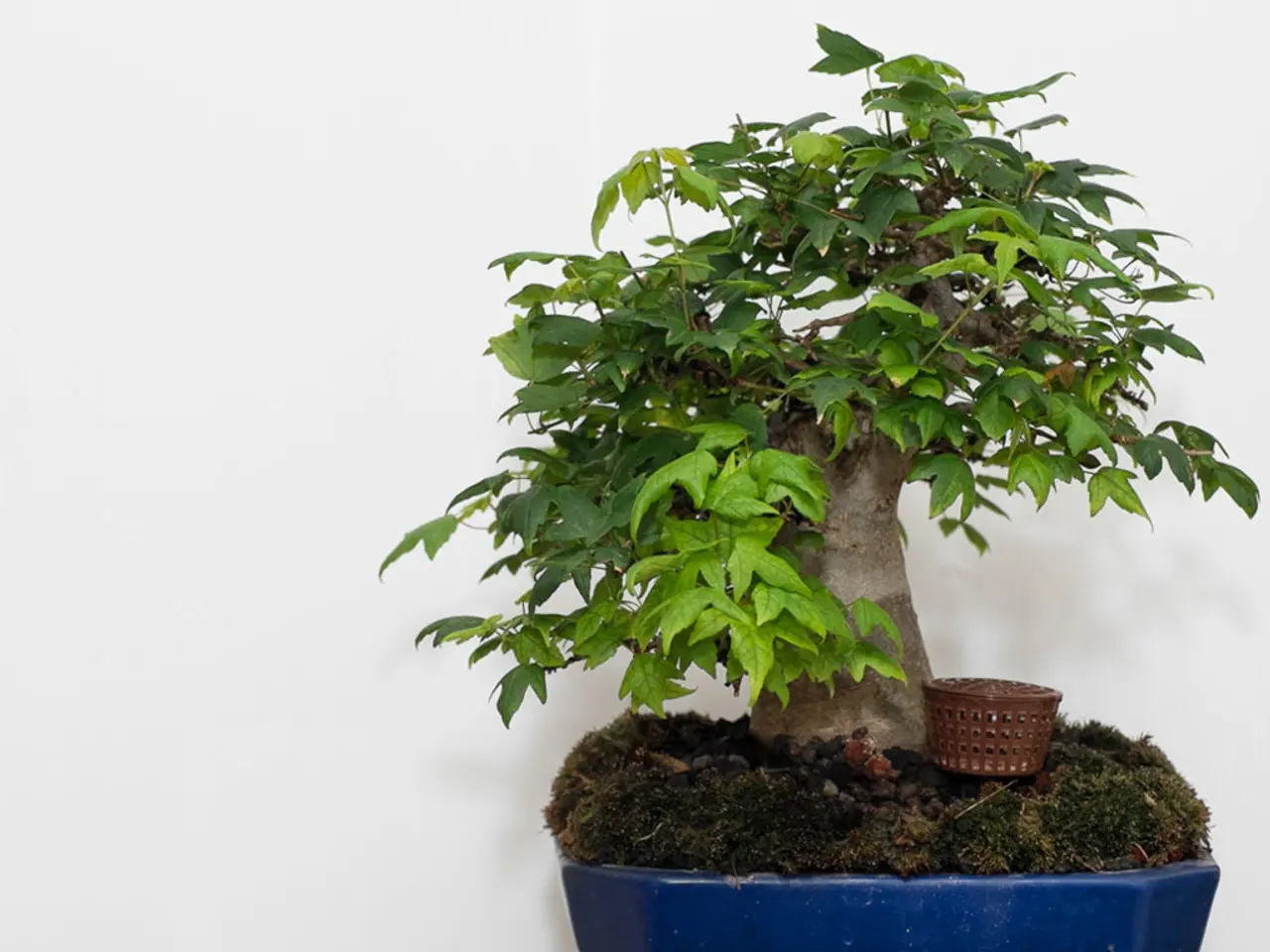Encouraging Root Development through Bonsai Air Layering: Cultivating a Damp Atmosphere
In the art of bonsai, maintaining the perfect balance of moisture is crucial for successful air layering. Here's a step-by-step guide on how to achieve ideal moisture levels.
After girdling (removing a ring of bark and inner cambium), apply moist sphagnum moss around the exposed area to provide a rich medium for roots to develop. Wrap the moss securely with plastic wrap or a plastic bag to create a sealed, humid environment that prevents moisture loss and protects against excess water from rain.
Consistency in watering schedule is key. Check the moss periodically to make sure it stays moist; if it dries out, mist or gently add water to maintain humidity. However, avoid letting the moss become soggy or stagnant, which can lead to fungal problems or root rot.
Position the air layering site where it receives indirect light and is sheltered from intense sun and drying winds, helping moisture retention. Use rooting hormone on the wounded area to stimulate root growth, which may help roots develop faster before callus tissue closes over the wound.
Seasonal factors affect moisture needs. Higher temperatures and dry air require more frequent moisture monitoring and maintenance (like misting or shading) to keep humidity optimal.
It's generally not recommended to air layer multiple branches on the same tree at once as it can cause excessive stress to the parent tree. The ideal moisture level for bonsai moss wrapping should be checked every 2-3 days to prevent desiccation.
The air layering process typically takes 1-6 months, but it can feel like an eternity. When performed correctly, air layering is a relatively low-stress technique that minimizes harm to the parent tree.
Overwatering can lead to root rot, so water the moss thoroughly but be careful not to overdo it. Observe the moss wrapping for signs of root growth such as increased moisture retention, swelling, or the appearance of fine roots.
Regularly inspect the moss wrap for pests and diseases and treat any issues promptly with organic pest control methods or fungicides to maintain a healthy environment. Use lukewarm water for watering to avoid shocking the roots.
While sphagnum moss is ideal, alternative materials like coconut coir, peat moss, or even cloth can be used for air layering, but their water retention and aeration properties may vary. Key factors for successful bonsai root development include root density, root length, root color, moss condition, and a consistently moist environment.
Environmental factors such as temperature, humidity, and sunlight can affect the moss's moisture levels. Regularly checking the moss wrapping's moisture levels can prevent desiccation and ensure a conducive environment for root growth.
Maintaining the right moisture level in the home-and-garden environment is essential for the success of gardening projects, such as air layering. After air layering, it's important to create a sealed, humid environment to prevent moisture loss; This can be achieved by wrapping the sphagnum moss securely with plastic wrap or a plastic bag around the exposed area.




